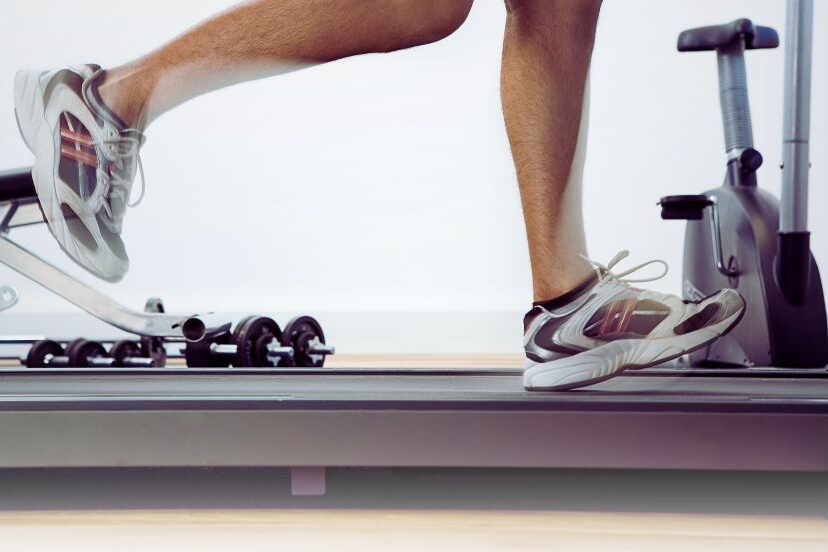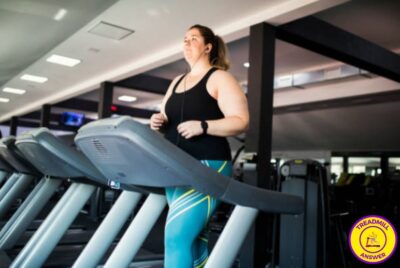Treadmill Walking Workouts: Your Guide to Effective Routines
Introduction to Treadmill Walking Routines
Treadmill walking workouts is one of the most accessible and effective ways to stay fit. Whether you’re a beginner or a seasoned walker, incorporating treadmill workouts into your routine can offer tremendous benefits.
This guide will walk you through everything you need to know about treadmill walking, from the basics to advanced routines, ensuring you get the most out of every step.
The Benefits of Treadmill Walking Routines
Treadmill walking is more than just putting one foot in front of the other. It offers a variety of benefits that contribute to your overall health and well-being.
- Cardiovascular Benefits: Walking on a treadmill helps to strengthen your heart and improve blood circulation. It’s a low-impact way to get your heart rate up and keep it steady, which is crucial for cardiovascular health.
- Weight Management: Regular treadmill walking workouts can help you maintain a healthy weight or shed excess pounds. It burns calories effectively, especially when combined with a balanced diet.
- Joint-Friendly Exercise: Unlike running, walking is easier on the joints, making it a great option for those with arthritis or joint pain. Treadmills often come with cushioning systems that further reduce impact.
- Mental Health Benefits: Walking on a treadmill can also boost your mood. The act of moving your body releases endorphins, which are natural mood lifters, helping to reduce stress and anxiety.
Getting Started with Treadmill Walking Routines
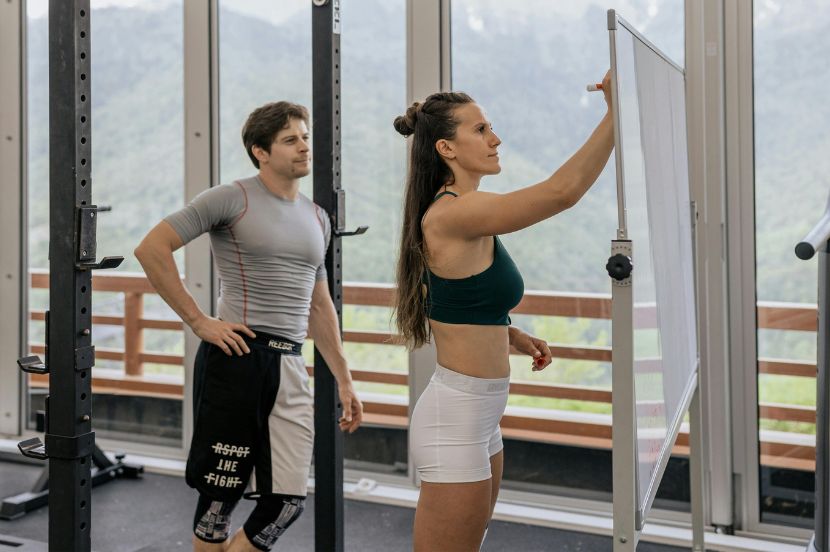
Before diving into your treadmill walking routine, it’s important to set yourself up for success.
- Setting Up Your Treadmill: Ensure your treadmill is placed on a stable surface and that you are familiar with its controls. Adjust the belt speed and incline to levels that match your fitness level.
- Basic Walking Techniques: Start by walking at a comfortable pace. Focus on maintaining a steady rhythm and use natural arm movements. If you’re new to treadmill walking, start slow and gradually increase your speed.
- Importance of a Warm-Up: Warming up prepares your body for exercise by gradually increasing your heart rate and loosening your muscles. Spend at least 5 minutes walking at a slow pace before picking up speed.
Choosing the Right Treadmill for Walking
Not all treadmills are created equal, especially when it comes to walking.
- Features to Consider: Look for treadmills with strong motors (at least 2.5 CHP), a spacious running surface, and good cushioning. Features like incline settings and pre-programmed workouts can also enhance your walking experience.
- Treadmills for Different Fitness Levels: Beginners might prefer a treadmill with basic features and easy-to-use controls, while more advanced users may seek out machines with higher incline options and advanced tracking capabilities.
- Safety Tips: Always use the safety clip attached to your clothing, especially if you’re walking at higher speeds or inclines. This feature will stop the treadmill if you lose balance.
Proper Treadmill Walking Posture
Maintaining the right posture is crucial for an effective and safe treadmill workout.
- The Importance of Posture: Proper posture prevents injury and ensures you are targeting the correct muscle groups. Stand tall, keep your shoulders back, and engage your core as you walk.
- Common Mistakes: Avoid leaning forward or backward, as this can strain your back. Also, resist the urge to hold onto the handrails, as this can reduce the effectiveness of your workout.
- Tips for Maintaining Correct Posture: Focus on keeping your head up and your eyes forward. Imagine a string pulling you up from the top of your head to help maintain an upright position.
Beginner-Level Treadmill Walking Routine
For those new to treadmill walking, it’s important to start with a routine that’s easy to follow and not too intense.
- Easy Warm-Up (5 minutes): Start at a slow pace (2-2.5 mph) to gradually raise your heart rate.
- Basic Walking (20 minutes at 2.5-3.5 mph): Once warmed up, increase your speed slightly to a comfortable pace. This is a steady-state walk that helps build endurance.
- Cool Down (5 minutes): Lower your speed back to 2 mph to cool down. This helps to gradually lower your heart rate and relax your muscles.
- Estimated Calorie Burn: This routine can burn approximately 100-150 calories, depending on your weight and speed.
Intermediate Treadmill Walking Routine
If you’re ready to take it up a notch, the intermediate routine introduces incline walking for an added challenge.
- Warm-Up (5 minutes): Begin with a 5-minute warm-up at 2.5 mph.
- Incline Walking (30 minutes at 3-4 mph, incline 3-5%): Increase the treadmill’s incline to 3-5% and walk at a moderate pace. The incline simulates uphill walking, which engages more muscle groups and increases calorie burn.
- Cool Down (5 minutes): Gradually decrease the incline and speed for a 5-minute cool-down.
- Estimated Calorie Burn: This routine can burn approximately 200-300 calories.
Advanced Treadmill Walking Routine
For advanced users, this routine incorporates high-intensity interval training (HIIT) to maximize calorie burn and cardiovascular benefits.
- Warm-Up (5 minutes): Start with a 5-minute warm-up at 2.5 mph.
- High-Intensity Interval Walking (40 minutes with speed and incline variations): Alternate between 2 minutes of fast walking (4-5 mph) with a 5% incline, followed by 2 minutes of slow walking (3 mph) on a flat surface. Repeat this pattern for 30 minutes.
- Cool Down (10 minutes): End with a 10-minute cool-down at a slower pace and flat incline.
- Estimated Calorie Burn: This intense routine can burn approximately 400-500 calories, depending on your weight and intensity.
Treadmill Workouts for Weight Loss

Treadmill walking is an effective way to lose weight, especially when combined with the right routines.
- How Treadmill Walking Aids in Weight Loss: Walking at a moderate pace burns calories steadily. When combined with incline and interval training, the calorie burn increases significantly, making it easier to create a calorie deficit.
- Best Treadmill Walking Workouts for Fat Burning: High-intensity interval walking and incline walking are particularly effective for fat burning. These routines elevate your heart rate and engage more muscle groups.
- Tips to Maximize Calorie Burn: To boost calorie burn, try walking first thing in the morning on an empty stomach, incorporate intervals, and add incline to your workouts.
Incorporating Incline in Your Treadmill Walking
Walking on an incline offers several benefits beyond just burning more calories.
- Benefits of Incline Walking: Walking uphill increases the intensity of your workout, targeting your glutes, hamstrings, and calves. It also helps to build endurance and strength.
- Sample Incline Walking Routine: Start with a 5-minute warm-up at 0% incline. Then, walk for 20 minutes at a 5-7% incline at 3-4 mph. Cool down with 5 minutes of walking at 0% incline.
- Adjusting Incline Based on Fitness Level: Beginners should start with a lower incline (3-5%), while more advanced users can increase the incline to 10% or higher.
Interval Training on the Treadmill
Interval training is a great way to boost your treadmill workout walking routine, providing both cardiovascular and fat-burning benefits.
- What is Interval Training: Interval training involves alternating periods of high-intensity exercise with periods of lower intensity or rest. It’s an efficient way to burn calories and improve cardiovascular fitness.
- Benefits of Interval Walking: Interval walking not only burns more calories but also improves endurance and cardiovascular health. It’s also less monotonous, keeping your workouts interesting.
- Sample Interval Training Routine: Walk at 3.5 mph for 2 minutes, then increase to 5 mph for 1 minute. Repeat this cycle for 30 minutes. Adjust the speed and duration based on your fitness level.
Treadmill Walking for Cardio Fitness

Walking on a treadmill is an excellent way to improve your cardiovascular health.
- How Treadmill Walking Improves Cardiovascular Health: Regular walking helps to lower blood pressure, improve circulation, and reduce the risk of heart disease.
- Recommended Routines for Cardio Improvement: To focus on cardio, try to walk at a brisk pace (3.5-4 mph) for at least 30 minutes, five times a week.
- Monitoring Heart Rate During Workouts: Keep track of your heart rate during your workout to ensure you’re in the optimal zone for cardiovascular improvement (typically 50-70% of your maximum heart rate).
Treadmill Walking for Muscle Tone
Walking isn’t just for cardio; it’s also great for toning muscles.
- Key Muscle Groups Targeted by Walking: Walking primarily targets the lower body muscles, including the quadriceps, hamstrings, glutes, and calves.
- How Incline Walking Increases Muscle Engagement: Walking on an incline increases the demand on your leg muscles, particularly your glutes and hamstrings, helping to tone and strengthen them.
- Sample Muscle-Toning Routine: Walk at a 5% incline at 3 mph for 10 minutes, increase to 7% for 10 minutes, and then cool down with 5 minutes at a 0%
To help tone your muscles while walking on a treadmill, try incorporating this routine:
- Warm-Up (5 minutes): Begin with a 5-minute warm-up at 2.5 mph on a flat incline to get your muscles ready.
- Walk at a 5% Incline at 3 mph for 10 minutes: Start your muscle-toning routine by walking at a moderate pace with a 5% incline. This will engage your glutes, hamstrings, and calves more intensely than walking on a flat surface.
- Increase to a 7% Incline for 10 minutes: After 10 minutes, raise the incline to 7% while maintaining the same speed. This increase in incline further intensifies the workout for your lower body muscles, particularly your glutes and thighs.
- Cool Down (5 minutes): Gradually reduce the incline to 0% and slow down your pace to 2.5 mph for a 5-minute cool-down. This helps to gradually lower your heart rate and stretch out your muscles.
Estimated Calorie Burn: Depending on your weight and intensity, this routine can help you burn approximately 250-350 calories.
Tracking Your Progress
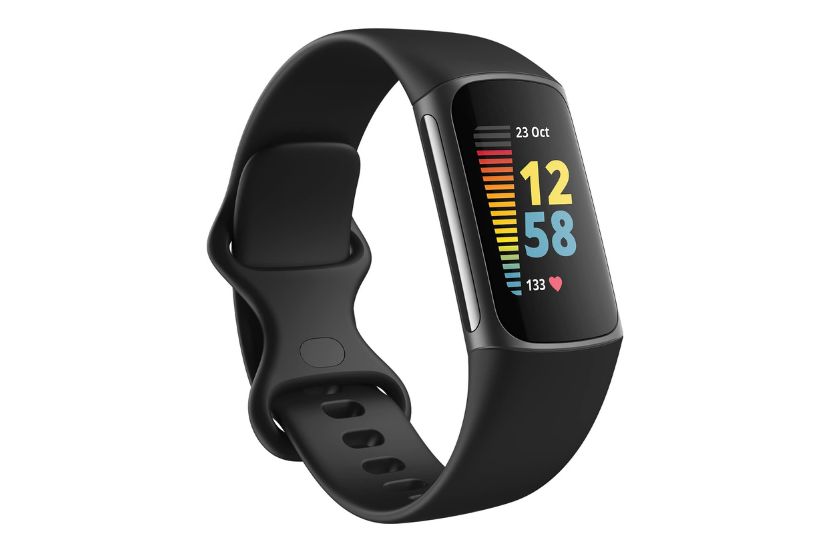
One of the most motivating aspects of a treadmill workout walking routine is seeing your progress over time. Here’s how you can effectively track your improvements:
- Importance of Tracking Your Workouts: Keeping track of your workouts allows you to see your progress, adjust your routines as needed, and stay motivated. It’s especially useful for setting and achieving your fitness goals.
- Leveraging Fitness Apps and Treadmill Metrics: Many modern treadmills feature built-in tracking tools that capture key workout metrics such as speed, distance, incline, and calories burned. Additionally, you can integrate these metrics with fitness apps like MyFitnessPal or Fitbit to consistently monitor and track your progress over time.
Setting and Achieving Fitness Goals
Setting clear and achievable fitness goals is crucial for staying motivated and making consistent progress in your treadmill workout walking routine. Here’s how you can do it effectively:
- Define Your Goals: Start by identifying what you want to achieve with your treadmill walking workouts. Whether it’s losing weight, improving cardiovascular health, or increasing endurance, having a specific goal will guide your workouts. For example, if your goal is weight loss, you might aim to burn a certain number of calories per week.
- Break Down Your Goals: Once you have a long-term goal, break it down into smaller, manageable milestones. For instance, if you aim to walk a certain distance, start by increasing your daily or weekly walking distance incrementally. This approach helps keep you focused and prevents you from feeling overwhelmed.
- Track Your Progress: Use a fitness app, a treadmill’s built-in tracking system, or even a simple journal to record your workouts. Tracking details like the duration of your walk, the speed, incline, and calories burned can give you valuable insights into your progress.
- Adjust Your Routine as Needed: As you progress, your fitness level will improve, and what once was challenging may become easy. Regularly review your goals and adjust your treadmill walking routine to ensure it continues to challenge you. This might include increasing your speed, incline, or duration of your walks.
- Celebrate Your Successes: Don’t forget to celebrate your achievements along the way! Reaching a milestone or sticking to your routine deserves recognition. Rewarding yourself can keep you motivated and excited about your treadmill walking journey.
Combining Treadmill Walking with Strength Training
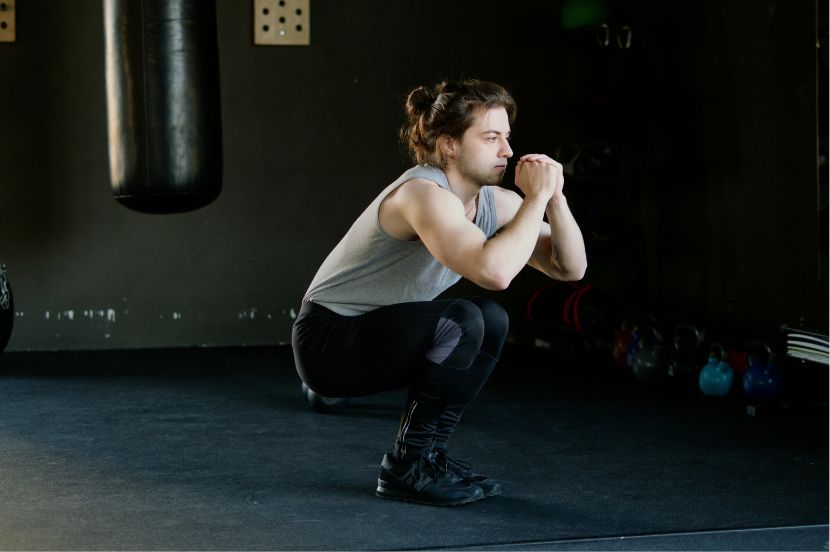
While treadmill walking is excellent for cardiovascular fitness, combining it with strength training can enhance your overall fitness and help you achieve a balanced workout regimen.
- Benefits of Combining Cardio and Strength: Combining treadmill walking workouts with strength exercises like lunges, squats, or light weight training offers a well-rounded fitness routine that targets multiple aspects of health and fitness.
- Improved Muscle Tone and Strength: Incorporating strength exercises into your treadmill walking routine enhances muscle definition and increases overall strength. For example, after a brisk walk, step off the treadmill and perform a set of lunges or squats. This combination works on both cardio endurance and muscle development, ensuring that your body is not only burning calories but also building lean muscle mass.
- Enhanced Calorie Burn: Strength exercises increase muscle mass, which in turn boosts your resting metabolic rate. This means you’ll burn more calories even when you’re not working out. When combined with treadmill walking, this can lead to more effective weight loss and fat reduction.
- Balanced Fitness Routine: By integrating cardio and strength, you create a balanced workout that targets different fitness components. While treadmill walking primarily improves cardiovascular health and endurance, adding strength exercises enhances your muscle tone, strength, and flexibility.
Sample Routine Combining Cardio and Strength
Here’s a simple yet effective routine that combines treadmill walking with strength exercises:
- Warm-Up (5 minutes): Start with a 5-minute walk at a moderate pace on the treadmill.
- Cardio Phase (15 minutes): Increase the pace to a brisk walk (3.5-4 mph) with a slight incline (2-3%). Maintain this pace for 15 minutes to get your heart rate up.
- Strength Phase (10 minutes): Step off the treadmill and perform the following exercises:
- Lunges (2 sets of 12 reps per leg): This targets your quads, hamstrings, and glutes.
- Bodyweight Squats (3 sets of 15 reps): Focuses on your lower body strength, particularly the glutes and thighs.
- Push-Ups (3 sets of 10 reps): A classic upper-body strength exercise that targets the chest, shoulders, and triceps.
- Cardio Phase (10 minutes): Get back on the treadmill and continue walking at a moderate pace with a higher incline (4-5%) for 10 minutes to keep the heart rate elevated.
- Cool Down (5 minutes): Finish with a slow walk on the treadmill at a 0% incline to gradually lower your heart rate.h3 Staying Motivated with Treadmill Workouts
Staying Motivated with Treadmill Workouts
Maintaining motivation is crucial for sticking with your treadmill walking routine, especially as workouts become part of your daily life.
- Keep Your Routine Exciting: Change up your treadmill walking workouts by varying the speed, incline, and duration. This not only keeps things interesting but also helps to target different muscle groups and improve overall fitness.
- Use Music and Entertainment: Listening to music or watching a show can make your treadmill workout more enjoyable. Create a playlist with upbeat songs that match your walking pace, or choose a TV show that you only watch while on the treadmill, making your workout time something to look forward to.
- Set Challenges and Rewards: Challenge yourself with new goals, such as increasing your walking speed, adding more incline, or walking longer distances. Reward yourself when you achieve these goals with something you enjoy, like a relaxing bath or a new workout outfit.
- Join Online Communities: Connect with others who share similar fitness goals. Online communities or social media groups focused on treadmill walking can provide encouragement, tips, and accountability.
Common Mistakes in Treadmill Routines
Even though treadmill walking seems straightforward, there are common mistakes that can reduce its effectiveness or even lead to injury.
- Overstriding: Taking steps that are too long can put unnecessary stress on your joints and reduce your walking efficiency. Focus on taking shorter, quicker steps, which will help you maintain a better rhythm and reduce the risk of injury.
- Holding Onto the Handrails: While the handrails are there for safety, relying on them too much can reduce the effectiveness of your workout. If you find yourself holding onto the rails, try to lower the treadmill speed or incline until you feel comfortable letting go.
- Not Varying Routines: Doing the same workout repeatedly can lead to a fitness plateau. Make sure to mix up your treadmill workouts by changing the speed, incline, or duration to keep challenging your body and improving your fitness level.
Advanced Tips for Treadmill Walking Routines

If you’ve been walking on a treadmill for a while and want to push your limits, these advanced tips can help you get more out of your workouts:
- Using Heart Rate Zones for Training: Monitoring your heart rate ensures you’re working out at the right intensity. Aim to stay within 50-70% of your maximum heart rate for fat burning and up to 85% for improving cardiovascular fitness.
- Adjusting Speed and Incline for Different Goals: Tailor your treadmill settings based on your fitness goals. For endurance, maintain a steady pace over a longer duration. For strength, increase the incline to simulate hill walking, which engages more muscle groups.
- Incorporating Longer Walks into Your Routine: Consider adding a longer walk into your weekly routine. This could be a 60-minute walk at a moderate pace with varying inclines. Longer walks help build endurance and burn more calories.
Conclusion: The Long-Term Benefits of Treadmill Workouts
Treadmill walking is an excellent, versatile exercise that can be tailored to suit any fitness level. Whether you’re just starting or looking to push your limits, walking on a treadmill can help you achieve your fitness goals, from weight loss to improved cardiovascular health and muscle tone.
Consistency is key—sticking with a treadmill workout walking routine will bring long-term benefits, including better health, increased energy, and a more toned body. Remember, the most important step is the first one, so lace up your walking shoes and get started today.
FAQs

1. How often should I do treadmill walking workouts?
For general health, aim for at least 150 minutes of moderate-intensity treadmill walking per week, spread across most days.
2. Can I lose weight just by walking on a treadmill?
Yes, consistent treadmill walking combined with a healthy diet can lead to weight loss, especially when you incorporate incline and interval training.
3. Is it better to walk on a treadmill or outside?
Both have their benefits. Treadmill walking offers a controlled environment and cushioning, which can be easier on the joints, while outdoor walking provides varied terrain and fresh air.
4. What’s the best speed for a treadmill routine?
It depends on your fitness level. Beginners might start at 2.5-3 mph, while more experienced walkers can increase to 3.5-4 mph or higher for a more intense workout.
5. How can I avoid getting bored during treadmill workouts?
Mix up your treadmill walking workouts with different speeds and inclines, listen to music or podcasts, watch TV, or set small challenges to keep things interesting.

